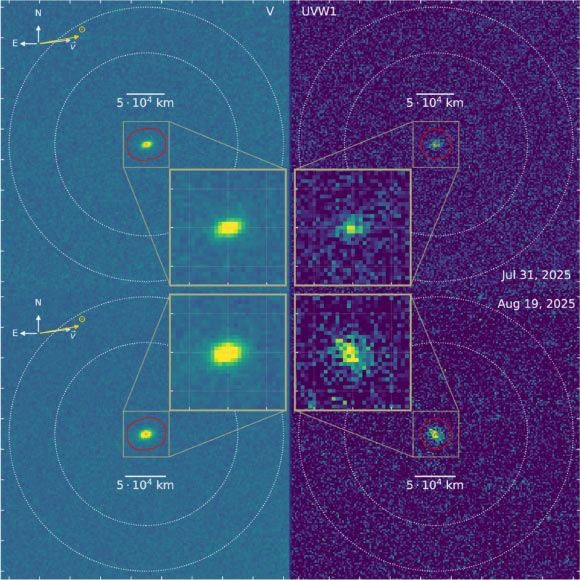Astronomers Unveil Water Activity on 3I/ATLAS
Scientists have made a groundbreaking discovery by detecting water-related activity on the interstellar object 3I/ATLAS. Using the advanced Ultraviolet/Optical Telescope aboard NASA’s Neil Gehrels Swift Observatory, researchers observed clear signatures of hydroxyl (OH) gas. This chemical fingerprint strongly indicates the presence of water, revealing new insights about the composition of objects traveling through our solar system from distant regions of space.

The detection of hydroxyl gas is significant because it results from sunlight breaking apart water molecules. This means that 3I/ATLAS harbors water ice on its surface or within its structure, similar to comets found in our own solar system. The findings not only strengthen the theory that water exists in abundance beyond our solar system, but also provide valuable clues about the building blocks of planetary systems across the galaxy.
What This Discovery Means for Astronomy
The ability to detect water on an object from another star system highlights the power of modern astronomical instruments. This breakthrough opens up new possibilities for understanding the origins of water and life-forming molecules in the universe. As astronomers continue to study interstellar visitors like 3I/ATLAS, we can expect even more exciting revelations about the mysteries of our cosmic neighborhood.
Sources:
Source
















